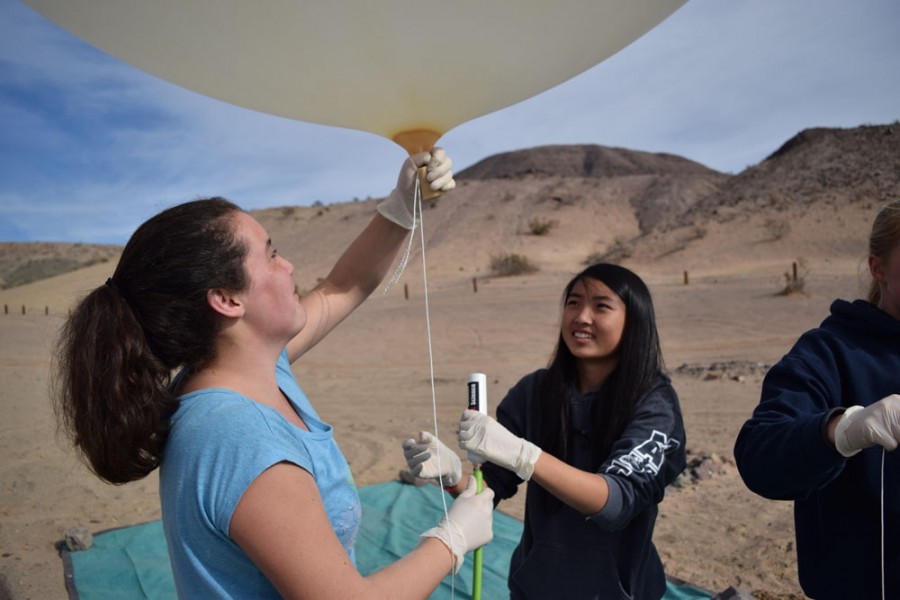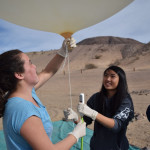Winter break is universally understood as a time to stay as far away from anything remotely academic as possible. But, while most students were spending winter vacation in exotic locations or camped out in front of Netflix, the PVIT space team was celebrating the success of their recent project.
On December 14, PVIT’s space team launched a seven-foot space balloon in Barstow, California. The balloon ended up reaching an altitude of over 100,000 feet, a little over 20 miles. “The idea is that we eventually want to try to launch a nano-satellite, which is a small 4 by 4 by 4 satellite,” PVIT advisor Mrs. Loh-Norris said. “You have to get a proposal with NASA to get it on a rocket. A lot of colleges have launched them and one high school has been successful doing that, so we’d like to also try to do that. We’re trying to get some experience with putting things in space and up in the atmosphere, which is why we started with this high-altitude balloon project.”
Attached to the halo of the balloon was a wooden, triangular base which supported a GPS tracking device, a radio, and a GoPro. The team also attached a couple of experiments to their balloon. For the first experiment they attached SD cards to the balloon to see if the pressure change or the temperature change would affect the pattern on the SD card, while in the second experiment marshmallows were added to see if the lower pressure would make the marshmallows expand. Once the balloon reached a certain altitude, both the marshmallows and the balloon expanded until they reached the point where the balloon finally popped, and the frame and experiments were carried down by a parachute. “When it actually worked, it definitely made us really proud of ourselves,” said junior Leonora Meroth. “Just watching it go up was probably the most exciting thing because we were really freaking – out when you release the balloon, you really only have one chance. If it goes up and pops before it gets to its destination, then it’s kind of a disappointment.”
Despite the success, there were a few setbacks that made the project difficult to complete. The $1000 price tag put a lot of pressure on the students. “Building the balloon wasn’t very difficult, but it was the mainly mental aspect,” freshman Amy Miao said. “Just thinking about retrieving the $1000 balloon and worrying about whether it was going to land in the right spot or not, worried us a little.”
Because the project was so expensive, the PVIT members were extremely worried when they could not find the balloon after it had landed. “It landed in a really obscure place- we thought it was going to land in the middle of a flat desert, so it would be easy to spot, but it actually landed in a really rocky, mountain part of the desert,” Miao said. The balloon, which was launched in Barstow, landed several miles away in the Mojave Preserve. “It took us a couple of attempts to find the balloon because the first time it got too dark, the second time the GPS couldn’t find it, and then the third time they had a better GPS device and found it,” Loh-Norris said. “Only then were we able to pull the pictures off the GoPro camera.”
Due to the aircraft’s initial success, the PVIT team has scheduled another launch in April or May. “We’re thinking of launching it and camping out there because finding the balloon when it comes down is a challenge” explains Mrs. Loh-Norris. They plan on altering things a bit to perfect the aircraft and look forward to another successful launch. The PVIT team then hopes to work on sending their own satellite up into space, which would make Palos Verdes High School the second high school in the nation to do so.

